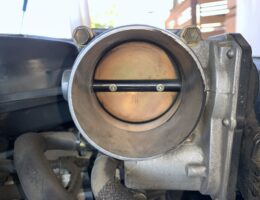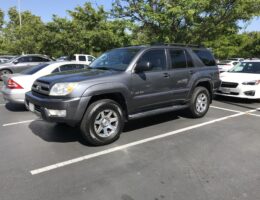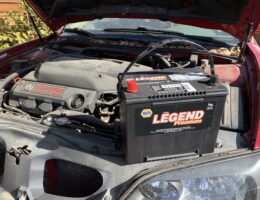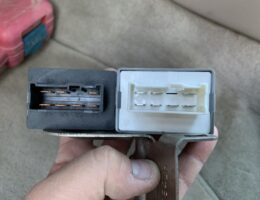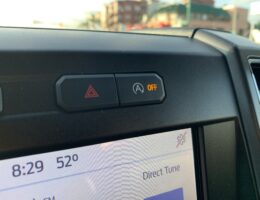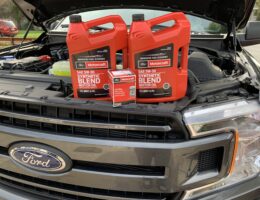Cleaning the throttle body on a 4th generation Toyota 4Runner (1GRE-FE 4.0L V6 engine) is not a difficult job. It requires removal of the air intake and air filter housing to gain access to the throttle body. You should also consider replacing the throttle body gasket since you will already have access to it.
The Mass Air Flow (MAF) sensor is a device that is located at the air intake, which measures how much air is coming into the engine and then tells the vehicle how much fuel it needs to inject. Over time, the MAF sensor can become dirty and require cleaning. Since the sensor on these vehicles utilizes an extremely delicate “hot wire”, used to measure air flow, it cannot be cleaned with regular cleaners or even brake cleaner. A mass air flow sensor cleaner is required to safely clean the hot wire.
If you own a 4th generation Toyota 4Runner and are still running OEM wheels, you may be looking into upgrading your wheels. One of the common things that people look to do is to upgrade to wheels that have more negative offset. This effectively pushes your wheels out towards the outside of the vehicle for a more aggressive stance. A popular option and one that I’m a big fan of is using 5th generation Toyota 4Runner OEM wheels to replace the stock 4th generation ones.
When I purchased my Acura CL-S from the original owner a couple years back, I continued to use the OEM battery that was installed. Since I didn’t get to drive the car much, the battery had gone dead several times already and after jumping it and recharging it so many times, I felt it was probably about time to replace the battery. Plus, it would be nice to get a battery that had some more cold-cranking amps (CCA’s) to help with cold starts.
The serpentine belt (also known as the drive belt) is a reinforced rubber belt that delivers power from the crankshaft to multiple accessories of a vehicle such as the air conditioning, alternator, water pump, etc. Since it drives critical components of a vehicle, it is important to perform regular inspections of the serpentine belt and to replace it when it is required to do so. he replacement of the serpentine belt can be a quick and easy job if you are aware of a couple things that could possibly throw you off-course.
I’ve had enough of the existing PGM-FI relay issues and decided to finally just replace the relay. To my relief, these things are not expensive if you purchase them aftermarket. And to my surprise, the replacement part works like a charm.
Some folks have gotten used to the start-stop feature while others are adamantly opposed to it. For those who can’t stand auto start-stop, there are a number of ways to permanently disable the feature. These methods vary in cost, ease of installation, and have varying effects on other features of the vehicle. I’ve compiled all of the ways to permanently disable auto start-stop on the 13th gen Ford F-150 and I hope it helps you determine what is best for you if you choose to do it.
The spark plug replacement on a 4th generation Toyota 4Runner is a job that you will need set aside 2-3 hours for. The replacement of the spark plugs themselves doesn’t take long, but most of the time will be spent removing components in the engine bay to get access to the spark plugs. I recommend using a step stool to get some additional height as you will be working closer to the middle and back of the engine bay; this is especially needed if you have a 4Runner that has a lift on it. This guide is written for the 4.0L V6 (1GRE-FE engine code) on the 4th Generation Toyota 4Runner.
My new 2020 Ford F-150 has been babied over the past year and a half having only driven about 2,000 miles on it so far. Many folks suggest changing out the oil at 1,500 miles if its a new vehicle as you may have more deposits and metal shavings in the oil from driving a new engine. Because I tend to agree with this concept, as well as the fact that it has already been over a year, I decided to change the oil and oil filter. In this write-up I performed the oil change using Ford’s recommended Motorcraft Synthetic Blend motor oil and Motorcraft oil filter.

